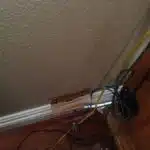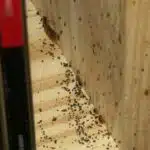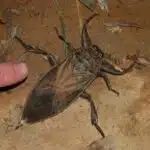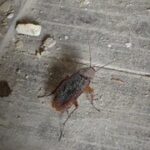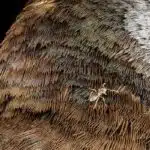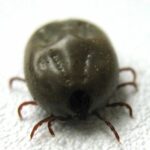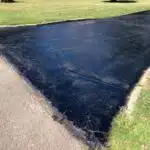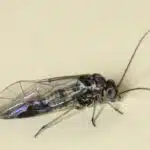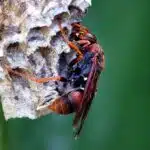Bats are nocturnal creatures that have become increasingly prevalent in residential areas. While they may be beneficial for the environment, their presence inside a home can be quite unsettling and potentially hazardous. Bats can carry diseases such as rabies and histoplasmosis, and their droppings can cause respiratory issues. Therefore, it is essential to know how to get rid of bats in a house safely and effectively.
There are various methods for bat removal, but it is crucial to take precautionary measures when handling them. It is recommended to seek professional assistance from pest control experts who specialize in bat removal. However, there are steps homeowners can take to prevent bats from entering their homes and eliminate any existing infestations. In this article, we will discuss different techniques for getting rid of bats in a house and provide tips on how to keep them out for good.
Identifying Signs Of A Bat Infestation
A house with a bat infestation can feel like a haunted mansion. It’s important to identify the signs of a bat infestation before taking any steps towards removing them. One of the most common signs of a bat infestation is the presence of guano or droppings. These are typically found in areas where bats roost, such as attics, eaves, and porches.
Another sign of bat activity is the presence of stains on walls or ceilings. Bats have oily fur that can leave behind dark smudges where they enter and exit a building. You may also hear noises coming from your attic or walls during the night when bats are most active.
The final sign of a bat infestation is actually seeing the bats themselves. If you notice bats flying in and out of your home at dusk or dawn, it’s likely that there is a colony living inside your property. Identifying these signs early on can save you from further damage and health risks associated with having bats in your home. Understanding the risks involved with removing bats from your home is crucial before attempting to do so.
Understanding The Risks Of Bat Removal
Identifying signs of a bat infestation is just the first step in addressing the issue. Understanding bat behavior is crucial in devising a successful plan for removal. Bats are nocturnal animals, and they usually roost during the day, hanging upside down from rafters, eaves, or other protected areas.
DIY bat removal can be risky and should not be attempted by homeowners. It is always best to seek assistance from professional pest control experts who have the experience and knowledge to safely remove bats from homes. There are many risks associated with DIY bat removal, including exposure to infectious diseases carried by bats such as rabies.
It’s essential to understand that removing bats from a home requires careful planning and execution. Preparing for bat removal involves several critical steps that must be followed to ensure success. These steps may include identifying entry points, sealing off potential access points, creating one-way exit devices, and safely removing any trapped bats from the property. By following these steps and enlisting the help of professionals when needed, homeowners can effectively rid their homes of pesky bats while minimizing risks associated with DIY removal methods.
Transition: With an understanding of bat behavior and awareness of the risks involved in DIY removal methods, it’s time to prepare for bat removal by taking necessary precautions and seeking professional assistance where needed.
Preparing For Bat Removal
Once you have confirmed the presence of bats in your home, it’s time to start preparing for their removal. While some homeowners choose to tackle the problem themselves, others prefer to hire a professional. If you decide on the latter option, start by finding professionals that specialize in bat removal. Look for providers with extensive experience in bat exclusion and relocation, as well as proper licensing and insurance.
If you are planning a DIY approach to bat removal, make sure you have all the necessary tools beforehand. These include gloves, protective clothing, a flashlight, and a net or trap for capturing the bats. Additionally, consider purchasing a bat exclusion device or two. These devices are designed to allow bats to leave but prevent them from re-entering their roosts.
One key aspect of preparing for bat removal is setting realistic expectations. Removing bats from your home can be an involved process that may take several days or even weeks to complete. Keep in mind that while it may be tempting to try and solve the problem yourself quickly, it’s often better to be patient and work methodically through each step of the process.
| Positive Emotions | Negative Emotions |
|---|---|
| Relief | Fear |
| Gratitude | Anxiety |
| Satisfaction | Frustration |
As you prepare for bat removal, remember that safety should always come first. Whether you choose to hire a professional or tackle the job yourself with DIY tools, take time to ensure that everyone involved is protected from harm. Once you’ve prepared adequately for bat removal, move on to sealing entry points as your next step towards ridding your home of these unwanted visitors.
Sealing Entry Points
- The first step to effectively getting rid of bats in a house is to inspect the home for possible entry points.
- Cracks and openings in the walls, roof and foundation should be sealed to prevent bats from entering.
- Small holes and crevices should be filled with caulking or other materials to prevent the bats from getting back in.
- Loose or missing tiles and shingles should be replaced and repaired to eliminate access points.
- Vents should be covered with fine mesh screens to prevent bats from entering the house.
- It is important to check the exterior of the home regularly to make sure that any new entry points are identified quickly and dealt with.
Inspecting Home
To effectively get rid of bats in a house, it is crucial to inspect the home thoroughly for potential bat hiding spots. Inspecting techniques such as checking for cracks and gaps in walls, roofs, and foundations can reveal the entry points that bats use to access your home. These inspection methods should be conducted during the day when bats are most likely to be resting outside of your home.
In addition, it is important to look for other signs of bat activity within your home. Bat droppings, urine stains, and greasy marks on surfaces may indicate areas where bats frequently roost or travel. These signs can also help identify the specific species of bat that has infiltrated your home.
Overall, a comprehensive inspection will provide valuable information that can guide effective bat removal and sealing strategies. By identifying all potential entry points and addressing them promptly, homeowners can successfully prevent further bat infestations without harming these beneficial creatures.
Sealing Cracks
After thoroughly inspecting your home for potential bat entry points, the next step is to seal off these openings to prevent further infestations. One of the most common ways that bats enter homes is through small cracks and gaps in walls, roofs, and foundations. Therefore, repairing cracks and gaps is a crucial step in effectively sealing entry points.
Repairing cracks can be a challenging task, especially if you are not experienced in home repairs. Hiring professionals who specialize in bat removal and sealing services can ensure that all cracks are properly sealed without causing damage to your home or harming any bats that may still be present. These experts use specialized equipment and techniques to identify all potential entry points and seal them off effectively.
It is important to note that sealing entry points should only be done after all bats have been removed from your home. Sealing entry points before removing the bats can trap them inside your home, leading to further complications. Therefore, it is recommended that homeowners work with professionals who can safely remove the bats before beginning any sealing work. By taking these steps, homeowners can successfully prevent future bat infestations while also protecting these beneficial creatures.
Covering Vents
After sealing off cracks and gaps in walls, roofs, and foundations, another important step in preventing bat infestations is covering vents. Vents are a common entry point for bats because they provide easy access to the inside of homes. However, covering vents without proper ventilation can lead to serious issues such as mold growth and poor air quality. As a pest control expert, it is important to stress the importance of ventilation when covering vents.
Covering vents involves installing mesh screens or other materials over the openings to prevent bats from entering while still allowing for proper ventilation. It is crucial to ensure that the size of the mesh is small enough to prevent bats from squeezing through, but large enough to allow adequate airflow. This process should only be done by professionals who have experience working with bats and know how to properly install vent covers without causing damage to your home or compromising its structural integrity.
While covering vents may seem like a simple task, it is essential for preventing future bat infestations. By working with professionals who specialize in bat removal and sealing services, homeowners can rest assured that all potential entry points are properly sealed off while maintaining good ventilation throughout their homes. This not only protects their property from further damage but also ensures the safety and well-being of any present occupants.
Using Bat Repellents
Bat repellents are a popular method used to keep bats away from homes. Natural alternatives such as peppermint oil, eucalyptus oil, and cinnamon have been reported to be effective in repelling bats. These oils can be mixed with water and sprayed in areas where bats are commonly found.
However, it is important to note that the effectiveness of repellents varies depending on the situation. Some homeowners report success with natural repellents while others do not see any improvement. It is also worth considering that some repellents may only work for a short period before losing their effectiveness.
If you choose to use bat repellents, it is advisable to monitor their effectiveness and consider other options if they do not provide the desired results. It may also be necessary to reapply repellents regularly or switch to alternative products for better results. Natural alternatives can be a good starting point, but it is important to remember that there is no one-size-fits-all solution when it comes to pest control.
With natural alternatives being just one option for dealing with bat infestations, installing bat boxes can be an effective long-term solution for keeping bats out of your home. Bat boxes provide a safe and comfortable habitat for bats outside of your home, which can help prevent them from entering in search of shelter. In the next section, we will discuss how to install bat boxes and what you need to know about this process.
Installing Bat Boxes
As the old adage goes, prevention is better than cure. The same principle applies when it comes to managing bat infestations in your home. Rather than resorting to harmful methods that may harm these creatures, why not consider installing bat boxes instead? These structures offer a safe and humane way of removing bats from your living quarters while promoting their survival.
One of the significant benefits of using bat boxes is that they provide an alternative roosting site for these winged mammals. Instead of making a home in your attic or walls, they can thrive comfortably in their designated habitat without causing any disturbances. Additionally, bat boxes can help reduce mosquito populations as bats are natural predators of these insects. With fewer mosquitoes around your property, you’ll have fewer chances of contracting mosquito-borne diseases such as West Nile virus and dengue fever.
If you’re keen on building your DIY bat box, there are several things you should keep in mind. Firstly, ensure that the box has a roughened interior surface to provide ample grip for bats if they need to move around inside. Secondly, make sure that the entrance hole is small enough to prevent predators such as birds from accessing the box while large enough for bats to enter easily. Lastly, ensure that the box is mounted at least 15 feet above ground level and away from direct sunlight.
Installing bat boxes is an effective way of addressing bat infestations without resorting to harmful measures such as trapping or extermination. By providing a safe and comfortable environment for these animals to thrive, we also promote their vital role in our ecosystem’s balance. In the next section, we will discuss using humane traps as another alternative method for removing bats from your home safely and humanely.
Using Humane Traps
Humane traps are an effective method to remove bats from a home without causing them harm. Different types of humane traps exist, such as a one-way door, a modified bat house, and a modified bird house. In order to effectively set a humane trap, it is important to understand the size of the bat, the environment, and the regulations in the area. Additionally, the placement of the humane trap is critical to ensure that it is effective in trapping the bats.
Types Of Humane Traps
Bats are fascinating creatures that play an essential role in our ecosystem. However, when they infest your house, they can create a significant disturbance and cause damage to your property. Using humane traps is an effective and ethical way of getting rid of bats without harming them. There are different types of humane traps available that you can use to capture bats safely.
DIY traps are a popular option for homeowners who want to get rid of bats on their own. These traps can be made from household items such as cardboard boxes or mesh netting. However, it’s crucial to note that not all DIY traps are effective in capturing bats. You need to ensure that the trap is large enough to accommodate the bat comfortably and has proper ventilation to prevent suffocation. If you’re unsure about making your own trap, it’s best to seek professional services.
Professional services offer various humane traps designed explicitly for capturing bats. These traps are made from high-quality materials and have been tested for effectiveness. They come in different sizes and shapes, depending on the type of bat infestation you’re dealing with. Professional pest control experts have the necessary skills and experience to set up these traps effectively, ensuring that no harm comes to the bats during capture.
In conclusion, using humane traps is an ethical way of getting rid of bats in your house without causing them any harm. DIY traps can be useful, but they require careful consideration before use. Seeking professional services guarantees safe and effective removal while minimizing stress for both you and the bats involved. Remember that capturing bats requires expertise and patience; therefore, it’s always best to consult with a pest control specialist before attempting any trapping yourself!
Setting Humane Traps
When dealing with bat infestations, the use of humane traps is a preferred method for capturing them. However, setting up these traps requires proper knowledge and skills to ensure their effectiveness. One crucial aspect to consider is the type of bait used in the trap. Effective baits may include insects or fruits that bats commonly consume. These baits should be placed inside the trap, along with some water to keep the bats hydrated during capture.
Setting up humane traps also involves considering the location and size of the trap. The trap should be placed near areas where bats are frequently seen or heard, such as attics or chimneys. It’s essential to ensure that the trap is large enough to accommodate multiple bats comfortably, as some species often roost together. Proper ventilation must also be provided inside the trap to avoid suffocation and stress among captured bats.
Safe disposal of captured bats is another critical factor to consider when using humane traps. Bats must be released back into their natural habitat safely and quickly after capture. Pest control experts have the necessary skills and experience in handling captured bats without causing harm or injury during release. It’s important to note that releasing bats too far from their original habitat may lead to their relocation issues, so it’s best to release them within a few miles from your home if possible.
Exclusion Devices And Netting
Exclusion devices and netting are effective ways to get rid of bats in a house. Exclusion devices work by allowing the bats to exit the house but not re-enter. These devices are usually installed at the entry and exit points of the house, and they are made up of one-way doors that allow the bats to leave but not come back in. Netting, on the other hand, is used to cover openings such as windows and vents that bats may use to enter the house.
The effectiveness of exclusion devices depends on their proper installation. If not correctly installed, bats can still find their way back into the house. It is essential to hire experienced professionals who have expertise in installing exclusion devices so that they can be installed correctly. Netting installation techniques also vary depending on where it is being installed; for example, netting used for covering open vents should be tightly secured around all four sides.
Overall, exclusion devices and netting are effective methods for getting rid of bats in a house. However, it is critical to seek professional help when installing these devices as they require specialized knowledge and tools. In the next section, we will discuss using ultrasonic devices as an additional method for getting rid of bats without harming them or damaging your property.
Using Ultrasonic Devices
Ultrasonic devices have become increasingly popular among homeowners who are looking for ways to get rid of bats without harming them. These devices emit high-frequency sound waves that are supposed to repel bats from the area. While some people swear by the effectiveness of ultrasonic devices, there is no scientific evidence to support their claims.
One of the limitations of ultrasonic devices is that they only work in a limited range. If you have a large house or property, you may need several devices to cover the entire area. Additionally, bats can quickly adapt to the sound and become immune to it over time. This means that the device may work for a while but eventually lose its effectiveness.
Despite these limitations, ultrasonic devices may still be worth trying if you are dealing with a small bat infestation or want to take preventative measures. However, if you have a large bat colony living in your attic or walls, it’s best to call in a professional pest control company that specializes in humane bat removal techniques.
Transition: Now that we’ve covered the effectiveness and limitations of ultrasonic devices, let’s move on to another important aspect of bat removal: removing their droppings and guano.
Removing Bat Droppings And Guano
As bats have a tendency to roost in attics, they can leave behind droppings and guano which can be hazardous to human health. Bat guano is known to contain harmful pathogens such as histoplasmosis, a fungal infection that affects the respiratory system of humans. Therefore, it is crucial to take steps to remove bat droppings and guano from your home.
To begin with, it is essential to wear protective clothing such as gloves and a mask before attempting to clean up bat droppings or guano. This will prevent any direct contact with the harmful substances and reduce the risk of inhaling them. Once you are properly dressed, use a vacuum cleaner with a HEPA filter to suck up any loose bat droppings or guano.
It is important to note that removing bat guano can be a challenging task and may require professional assistance. If there is an extensive amount of bat feces in your home, it is best to seek help from a pest control expert who has experience in removing bat waste without causing damage to your property or compromising your health.
- Use disinfectants such as bleach or hydrogen peroxide solution while cleaning.
- Seal all entry points after removing bats from the house.
- Dispose of contaminated materials safely using plastic bags.
- Install proper ventilation systems for better air circulation.
In summary, removing bat guano and droppings from your house is imperative for maintaining good health. It is essential always to wear protective gear when handling these substances and hire professionals if needed. Additionally, using disinfectants and sealing all entry points can help prevent future infestations. The next step involves cleaning and disinfecting infested areas thoroughly for complete eradication of pathogens left by bats in your home.
Cleaning And Disinfecting Infested Areas
After removing bat droppings and guano, it is crucial to disinfect the infested areas thoroughly. Disinfecting techniques help to eliminate any bacteria, fungi or viruses that may be present in the feces and urine of bats. The process involves using chemicals or other cleaning agents to kill microorganisms and make the affected areas safe for human habitation.
There are various DIY cleaning methods that homeowners can use to disinfect their homes after a bat infestation. One of the most effective ways is to use a bleach solution with a concentration of 10% or higher. This solution should be applied to all affected surfaces, including walls, floors, and ceilings. Alternatively, homeowners can use hydrogen peroxide or vinegar as natural disinfectants.
It is important to note that proper protective gear must be worn when disinfecting areas contaminated by bats. This includes gloves, goggles, and a face mask to prevent inhalation of airborne particles. Homeowners should also ensure adequate ventilation when using chemical cleaning agents.
Table: Emotional Response Table
| Emotion | Description | Action |
|---|---|---|
| Fear | Feeling scared or anxious | Call pest control professionals |
| Disgust | Feeling repulsed or nauseous | Wear protective gear while cleaning |
| Relief | Feeling relieved or grateful | Use effective cleaning techniques |
The next step after disinfecting infested areas is repairing damage caused by bats.
Repairing Damage Caused By Bats
Just like a house that has been ravaged by a storm, a home infested with bats can suffer significant damage. Bats have the ability to cause harm to structures and even the health of the inhabitants. They can chew through wires, gnaw on wooden beams, and leave behind droppings that are hazardous to human health. The longer they stay, the more extensive the damage they cause.
Repairing techniques for bat-damaged houses require special attention as bats are protected by law in many places. It is crucial to hire professionals who are licensed to deal with bat infestations and understand the necessary precautions while repairing. Repairing techniques may include sealing off entry points, fixing structural damages caused by bats, and cleaning up their droppings. These professionals will also be able to advise on safety measures such as wearing protective gear while cleaning up droppings or debris.
Safety measures should always be taken into account when dealing with bat infestations. Do not attempt to remove them yourself as it could lead to injuries or further damages. Always hire experienced professionals who follow proper procedures in handling bat infestations and repairing damages caused by them. Remember that prevention is key as well – regular inspections of your property can help identify any potential entry points for bats before they become a problem.
Transitioning into preventing future bat infestations: With the right precautions and repairs in place, you can significantly reduce the risk of future bat infestations. In the next section, we will discuss preventive measures that homeowners can take to keep their homes free from these pesky creatures.
Preventing Future Bat Infestations
Sealing all entry points is an important step to prevent future bat infestations. It is necessary to locate and seal all potential entry points, such as holes and cracks in the roof or exterior walls, to ensure that bats are unable to gain access to the interior of a house.
Reducing attractants to bats is also essential for preventing future bat infestations. Removing potential food and water sources, such as open containers of water or pet food, can help discourage bats from entering a house.
Regular inspections should also be conducted to detect any new entry points and to identify any potential attractants that may have been overlooked.
It is important to inspect attics, basements, and other areas where bats may be present, to ensure that any potential entry points are identified and sealed.
Regularly inspecting the outside of the house is also necessary to ensure that any cracks or holes in the exterior walls or roof are identified and sealed.
In addition to sealing entry points and reducing attractants, it is also important to regularly inspect the house to ensure that no new entry points have been created, and that any potential attractants have been removed.
Seal Entry Points
Bats are cute creatures, but having them in your home can be a nightmare. Their droppings and urine can cause serious health problems for you and your family. To prevent future bat infestations, it’s important to seal all entry points that bats might use to enter your home. Repairing damages caused by bats is also necessary to keep them out of your house.
One way to seal entry points is by using caulk or foam insulation around holes and gaps in walls, rooflines, and attics. Make sure to check for cracks larger than 1/4 inch as well as gaps around pipes, conduits, chimneys, and vents. If you’re not confident about doing this yourself, seek professional assistance from a pest control expert or a wildlife removal service.
It’s essential to repair damages caused by bats before sealing entry points. This includes repairing damage to roofing tiles or shingles, fixing broken windows or screens, and patching holes in walls and ceilings. By doing so, you’ll prevent other animals from entering your home while also keeping the bats out. Remember that prevention is key when it comes to bat infestations – take action now before they become a bigger problem later on!
Reduce Attractants
To further prevent future bat infestations, it’s important to reduce attractants in and around your home. Bats are attracted to certain things such as light, water sources, and food. By removing these attractants, you’ll decrease the likelihood of bats wanting to enter your home.
Firstly, lighting can be a major attractant for bats. They are naturally drawn to bright lights and will often roost near them. To avoid this, it’s recommended to use low-level lighting around your home’s exterior or switch to motion-activated lights that only turn on when necessary.
Secondly, water sources such as bird baths or swimming pools can also attract bats. It’s important to keep these areas clean and covered when not in use. Additionally, fix any leaks or standing water issues around your home which may also draw bats towards your property.
Lastly, food sources like fruit trees and compost piles should be removed or properly disposed of if they’re attracting bats. If you must have fruit trees on your property, make sure to pick up any fallen fruit immediately and dispose of it properly.
Incorporating these bat proofing methods by reducing potential attractants along with sealing entry points will greatly decrease the chances of future bat infestations in your home. Remember that taking preventative measures now will save you time, money and headaches down the road!
Regular Inspections
Regular inspections are crucial to preventing future bat infestations. It’s important to have a thorough inspection of your property done by a professional pest control expert at least once a year. This will help identify any potential entry points for bats, as well as other pests, that may be present on your property.
During an inspection, common entry points for bats should be thoroughly checked. Bats can enter through gaps in roofs, siding, vents, and chimneys. These entry points need to be sealed properly to prevent future access by bats. Additionally, cracks or gaps in windows and doors should also be inspected and sealed if necessary.
The benefits of regular inspections go beyond just preventing bat infestations. Inspections can also identify other potential pest problems that may be present on your property. By identifying these issues early on, you can take preventative measures to avoid significant damage or costly repairs later on. Overall, regular inspections are an essential part of maintaining a pest-free home and ensuring the safety of your family and property.
When To Seek Professional Help
When to Seek Professional Help:
If you have tried various methods to get rid of bats in your house and they persist, it may be time to call a professional pest control company. Bats are not only difficult to eliminate but also pose health risks through their droppings and the potential transmission of diseases. It is best to seek professional help if you notice signs of severe infestation such as an increasing number of bats or droppings.
One sign that indicates you need professional help is when there are more than ten bats inside your house. This means that the colony has grown large enough, and it will be challenging for you to remove them independently. Another warning sign is when there are piles of bat guano in your attic or other areas where they roost regularly. Bat droppings can harbor harmful fungi that can cause respiratory problems in humans, so it’s crucial to address this issue promptly.
In conclusion, it’s always advisable to seek professional help when dealing with a bat infestation problem. A reputable pest control company will have the necessary experience, equipment, and knowledge to safely remove bats from your home without harming them or causing damage to your property. With their expertise, you can rest assured that the problem will be resolved efficiently and effectively. In the next section, we’ll recap some essential techniques used by professionals in removing bats from homes.
Conclusion And Recap Of Bat Removal Techniques
When to Seek Professional Help in bat removal is a critical consideration. Sometimes, DIY attempts are not enough to solve the problem. For instance, a homeowner noticed that bats were roosting in the attic and attempted to remove them using a repellent spray. Unfortunately, the bats did not leave, and the spray made it difficult for the pest control expert to do their job effectively.
DIY vs Professional Services is an essential aspect to consider when dealing with bat infestations. While some people may opt for a DIY approach due to cost considerations, it is crucial to note that professional services offer several benefits. Firstly, they have specialized equipment and tools required for effective bat removal. Secondly, professionals know how best to handle bats without putting themselves or household occupants at risk of contracting diseases such as rabies.
Cost Comparison between professional services and DIY approaches also plays a significant role in bat removal. While DIY options may seem cheaper initially, they can be more costly in the long run if they do not solve the problem entirely. On the other hand, professional services may be pricey, but they provide value for money since they guarantee effective removal of bats and prevention of future infestations by sealing off entry points into homes via rooflines or vents.
- Factors that determine whether you need professional help
- The importance of proper handling procedures when removing bats from your home
- How much money you could save by opting for professional services instead of taking on this task yourself
- Tips on how best to choose a reputable pest control company
- The benefits of hiring a professional rather than trying to do it yourself
As previously stated, seeking professional help is often necessary when dealing with bat infestations in your home. While DIY methods may seem cheaper initially, they can ultimately be more costly if they fail to remove all bats or prevent future infestations. Therefore, it is essential always to weigh your options carefully before making any decisions regarding bat removal.
Conclusion
In conclusion, it is important to take swift action when dealing with a bat infestation in your home. Identifying signs of the infestation, understanding the risks involved, and preparing for removal are all crucial steps in the process. Sealing entry points and using repellents can also be effective methods in getting rid of bats.
It is interesting to note that bats can consume up to 1,200 mosquitoes in an hour, making them valuable contributors to controlling insect populations. However, this should not overshadow the potential health risks associated with bat droppings and bites. By following the aforementioned techniques and taking preventative measures, homeowners can successfully remove bats from their homes and prevent future infestations. If necessary, seeking professional help may also be advisable. Remember that early intervention is key in ensuring a safe living environment for you and your family.
Image Credits
- “Bat; Valdosta, Georgia, USA” by TomSpinker (featured)



